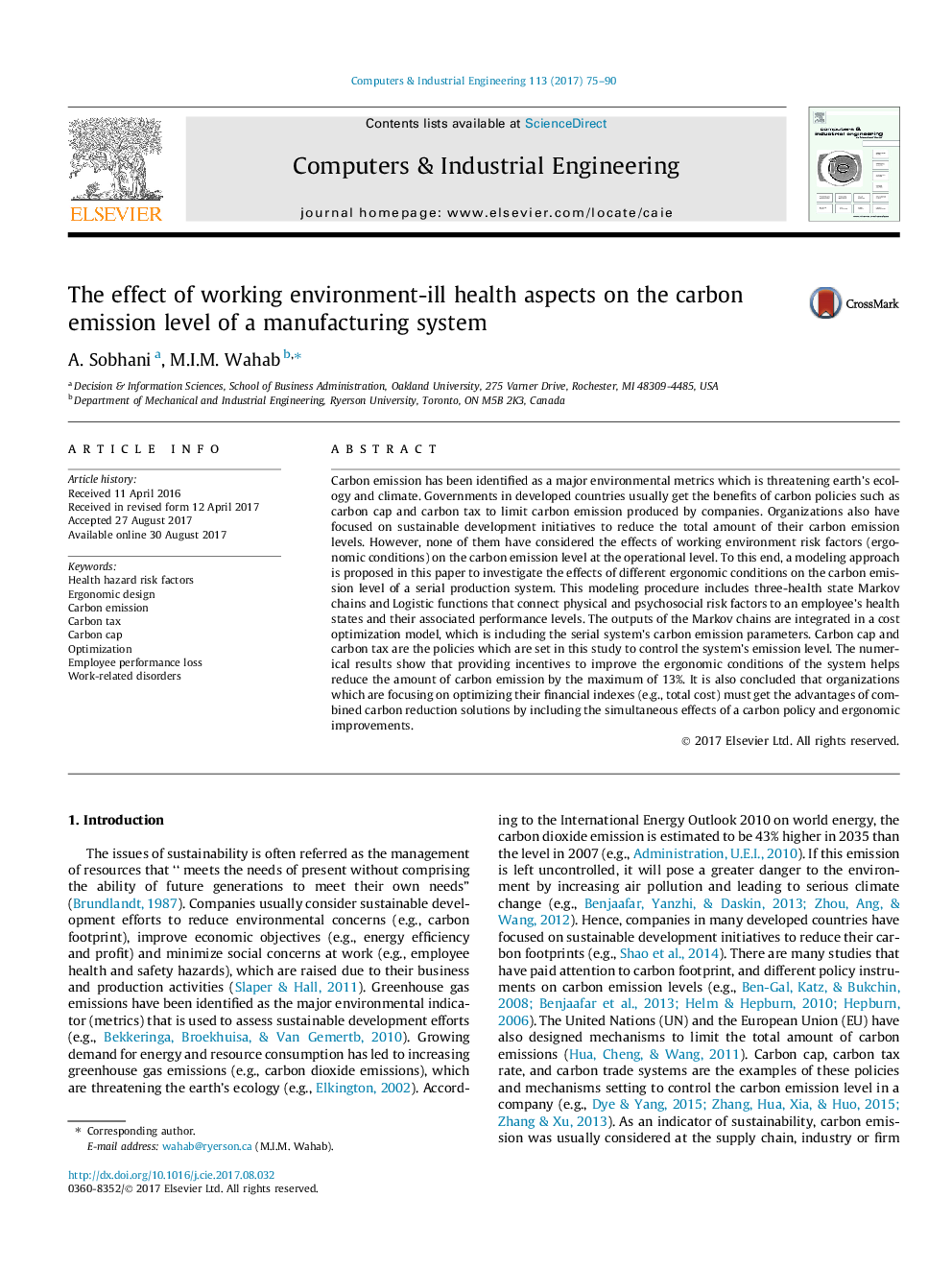| کد مقاله | کد نشریه | سال انتشار | مقاله انگلیسی | نسخه تمام متن |
|---|---|---|---|---|
| 5127422 | 1489053 | 2017 | 16 صفحه PDF | دانلود رایگان |
- Effect of ergonomic conditions of a serial system on carbon emissions is studied.
- Two different policies such as carbon cap and carbon tax have been investigated.
- Carbon cap changes the production strategy to control the carbon emissions.
- Carbon tax increases the total cost of the system and so does the price of the final product.
- Improving ergonomic conditions will considerably reduce the carbon emissions.
Carbon emission has been identified as a major environmental metrics which is threatening earth's ecology and climate. Governments in developed countries usually get the benefits of carbon policies such as carbon cap and carbon tax to limit carbon emission produced by companies. Organizations also have focused on sustainable development initiatives to reduce the total amount of their carbon emission levels. However, none of them have considered the effects of working environment risk factors (ergonomic conditions) on the carbon emission level at the operational level. To this end, a modeling approach is proposed in this paper to investigate the effects of different ergonomic conditions on the carbon emission level of a serial production system. This modeling procedure includes three-health state Markov chains and Logistic functions that connect physical and psychosocial risk factors to an employee's health states and their associated performance levels. The outputs of the Markov chains are integrated in a cost optimization model, which is including the serial system's carbon emission parameters. Carbon cap and carbon tax are the policies which are set in this study to control the system's emission level. The numerical results show that providing incentives to improve the ergonomic conditions of the system helps reduce the amount of carbon emission by the maximum of 13%. It is also concluded that organizations which are focusing on optimizing their financial indexes (e.g., total cost) must get the advantages of combined carbon reduction solutions by including the simultaneous effects of a carbon policy and ergonomic improvements.
Journal: Computers & Industrial Engineering - Volume 113, November 2017, Pages 75-90
